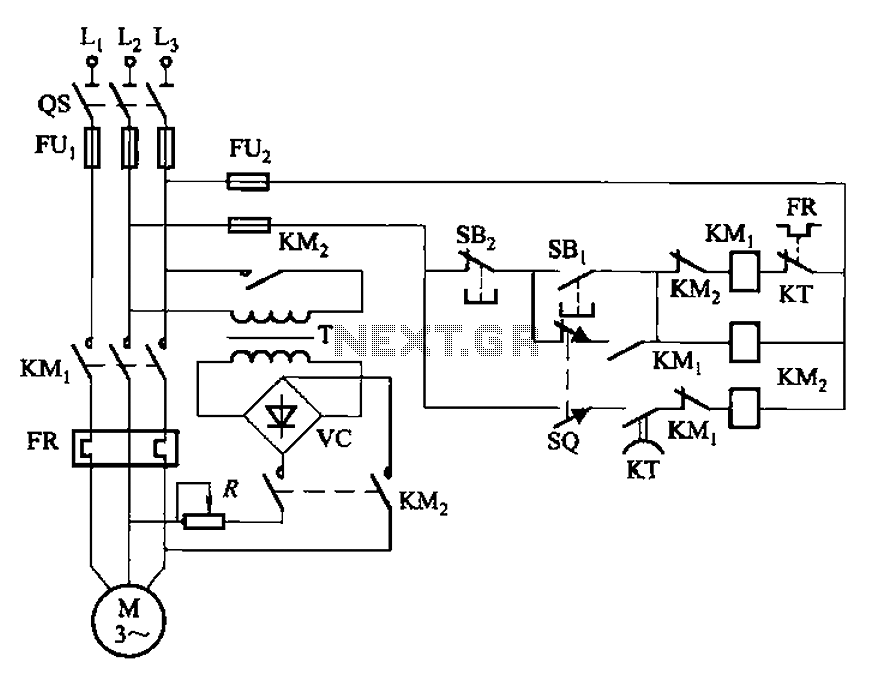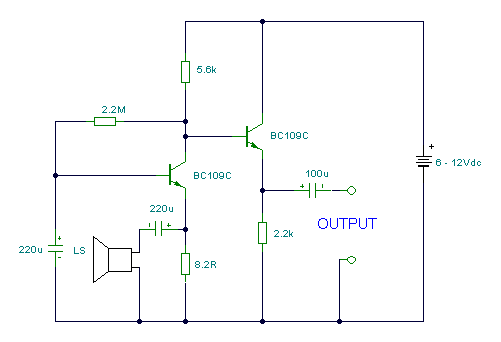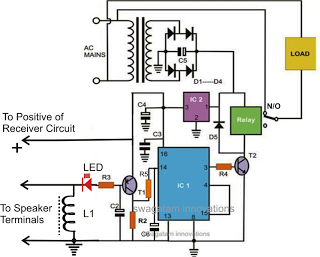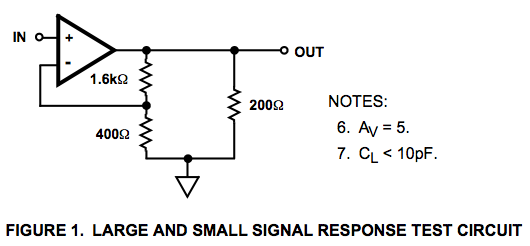
Power amplifier 2X5W with TDA1516Q circuit
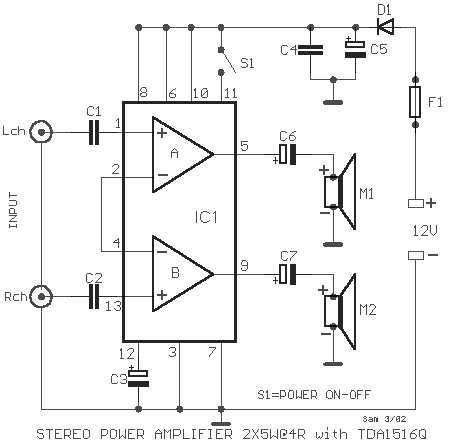
A simple stereo amplifier with minimal external components. It utilizes only one operational amplifier, which is capable of delivering an output power of 2x5W into a 4-ohm load, with a distortion of 0.5%.
This stereo amplifier circuit is designed to provide effective amplification with a minimalistic approach, making it suitable for various audio applications. The core component of this amplifier is a single operational amplifier (op-amp), which simplifies the design by reducing the number of external components required.
The op-amp is configured in a non-inverting amplifier configuration, which allows for high input impedance and low output impedance, ideal for driving speakers. The gain of the amplifier can be set using feedback resistors, ensuring that the output power meets the specified requirement of 2x5W into a 4-ohm load.
To achieve the stated output power, the power supply voltage must be appropriately chosen, typically in the range of ±12V to ±15V, depending on the specific op-amp used. The output stage of the amplifier may include additional components such as capacitors for coupling and bypassing to ensure stable operation and minimize distortion.
With a total harmonic distortion (THD) of 0.5%, the amplifier maintains a good balance between performance and simplicity. This makes it an excellent choice for applications where space and component count are critical, such as in portable audio devices or compact audio systems.
In summary, this simple stereo amplifier design leverages the capabilities of a single op-amp to deliver substantial audio power while keeping the circuit straightforward, making it accessible for both beginners and experienced electronics enthusiasts.A simple STEREO amplifier, with minimal external components. It use one only opamp., that is capable to give output power 2X5W in the 4 ohms, with distortion 0.5%.. 🔗 External reference
This stereo amplifier circuit is designed to provide effective amplification with a minimalistic approach, making it suitable for various audio applications. The core component of this amplifier is a single operational amplifier (op-amp), which simplifies the design by reducing the number of external components required.
The op-amp is configured in a non-inverting amplifier configuration, which allows for high input impedance and low output impedance, ideal for driving speakers. The gain of the amplifier can be set using feedback resistors, ensuring that the output power meets the specified requirement of 2x5W into a 4-ohm load.
To achieve the stated output power, the power supply voltage must be appropriately chosen, typically in the range of ±12V to ±15V, depending on the specific op-amp used. The output stage of the amplifier may include additional components such as capacitors for coupling and bypassing to ensure stable operation and minimize distortion.
With a total harmonic distortion (THD) of 0.5%, the amplifier maintains a good balance between performance and simplicity. This makes it an excellent choice for applications where space and component count are critical, such as in portable audio devices or compact audio systems.
In summary, this simple stereo amplifier design leverages the capabilities of a single op-amp to deliver substantial audio power while keeping the circuit straightforward, making it accessible for both beginners and experienced electronics enthusiasts.A simple STEREO amplifier, with minimal external components. It use one only opamp., that is capable to give output power 2X5W in the 4 ohms, with distortion 0.5%.. 🔗 External reference
